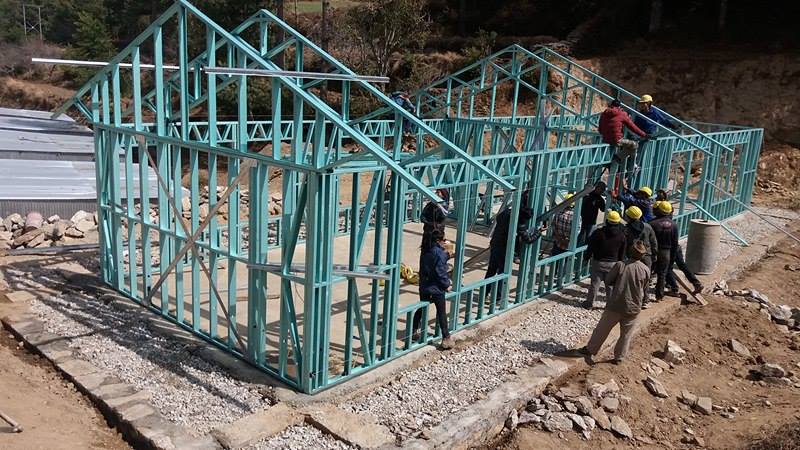
10 Aug More Than 35 Classrooms Rebuilt
The Australian Himalayan Foundation, an Australian based NGO founded in 2003, raised more than one million dollars in just three months after the 25 April 2015 earthquake, due to the outpouring of generosity from thousands of Australians who have visited Nepal for trekking holidays. Immediately after the 2015 earthquake, AHF swung into action by deploying disaster relief experts to work alongside locals and provide critical short-term support.
This was followed up by a program of major rebuilding in the villages of the Solukhumbu region, in the shadow of Mount Everest. In this region, AHF has run a major teacher training program and been responsible for the building of over 300 schools since 2012.
In the two years following the earthquake, AHF:
- Pioneered an innovative, earthquake resilient school design in partnership with Australian engineers and architects with approval of the government of Nepal
- Trained 80 local members of the community in masonry and building skills
- Provided 20 temporary learning spaces for kids to return to school while reconstruction took place
- Constructed over 35 classrooms across 8 different schools
AHF Chairman, Simon Balderstone AM, spent time in Kathmandu this week to oversee the work in progress. On Saturday 22 April Simon opens a newly rebuilt school in the village of Sindhuli. Seven classrooms of the local primary school in Sindhuli were destroyed in the 2015 earthquake and since then the school’s 180 children have attended classes in temporary bamboo structures during cold weather conditions.
Reflecting on the work done to date, Simon said the AHF’s practical and community based projects continue to provide the people of the Himalaya with improved life and work opportunities and wellbeing.
“AHF is focused on providing what is needed most by those who need it most in the remote areas of the Himalaya and the work we’ve done in the aftermath of the earthquake is testimony to our approach and our ability to be quick and nimble on the ground,” said Simon.
“Once the film crews and media left in 2015, the real work began, and we have continued to implement an unprecedented effort to restore the schools and hospitals in the regions we work in to make sure vulnerable communities can get on with their lives. Simon is in Kathmandu alongside AHF’s CEO, Carolyn Hamer-Smith.
“We have been working tirelessly with our local partners but so much more is needed,” said Carolyn.
“Once again, we are calling on the generosity of Australians who love Nepal to please dig deep, and ensure that our life-changing work can continue.
“The ground may have stopped shaking, but we remain shaken with so much left to do.”
The Australian Himalayan Foundation hopes to rebuild a further 18 schools in the coming year.
For further updates on AHF’s Earthquake relief efforts or to find out how to help visit: www.australianhimalayanfoundation.org.au or www.facebook.com/australianhimalayanfoundation
Background – 2015 Nepal Earthquake On 25 April 2015, the 7.8 magnitude earthquake caused 9,000 people to lose their lives and left 22,000 people injured. There was widespread destruction in the capital, Kathmandu, and in the villages dotted amongst the highest mountains on earth. The earthquake also triggered an avalanche on Mount Everest which killed 21 people, making it the deadliest day on the mountain in history. The first quake was then followed by a further earthquake and deadly aftershocks on 12 May, 2015.

